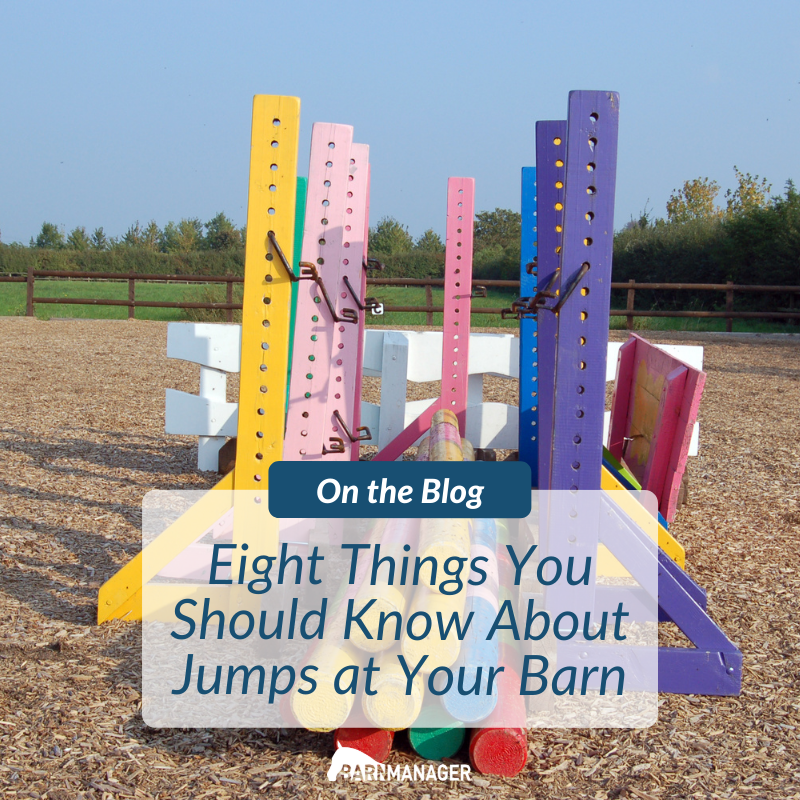Eight Things You Should Know About Jumps at Your Barn
We spoke with Pierre Jolicoeur, a former FEI-level course designer, three-time Olympic show jumping trainer, and founder of PJ Saddles and PJ Jumps to learn more about what types of jumps to have and what you need to make sure your barn is outfitted with correct, safe equipment for jumping.
- The type of jumps you need depends on the level of horses and riders using them as well as the type of riding they are doing. But no matter the discipline, the number one priority is safety. Find correct, well-made jumps, use breakaway cups, set courses properly, and you will be on your way to having fun and improving in the sport.
- Plan to have enough jump material for 10 jumps, including five oxers and five verticals. This doesn’t include any extra gymnastics you might want to set. That amount of jump material should give you enough to set a nice course of eight jumps and have reserves for when poles or standards break or need to be replaced, or when you want to build a double or triple combination.
- The length of poles needed is in direct proportion to the size of your riding ring. If you’re in an indoor ring or a smaller outdoor, ten-foot poles can be used. In a larger outdoor arena, 12-foot poles work nicely. If you’re lucky enough to have an expansive grass ring, you can try 14-foot poles but know that longer in length means heavier in weight!
- When setting a training course at home, design it first on paper and measure it to scale. For example, use graph paper where each square is set to a distance (i.e., one square equals one foot). Once you have measured your course out on paper, it will be easier to drop poles where the jumps should be in the ring, and you will know exactly where to put them. It is also a good idea to change your course at least once a week to keep challenging yourself and your horse, and so the footing does not get worn in the jump areas.
- Every training course set at home should be jumpable in both directions. This gives a lot of different options for training both horses and riders. You’ll need four poles per jump, whether it’s an oxer with two poles on each set of standards, or a vertical with two poles on the standards and a ground rail on each side.
- Pierre’s number one saying? “Horses hate surprises.” Make sure before you go to a competition that you have trained everything at home. Use your jump materials to simulate what you might encounter at upcoming shows. “Don’t do training at horse shows,” he says. “Know the facility you’re attending, the conditions, the course designer, the hunter judge; all of that gets you organized to win.”
- Make an investment in professionally-made jumps. “If you are spending money to buy and train a horse and compete at shows, you can’t be cheap on your training facility,” says Pierre. Jumps have too many details, and safety is too important, to make your own. Buy jump materials from people who know how to make them safely. If you’re on a budget, start with enough for six jumps, then buy six more the following year, for example. Soon enough, you will have a nice set of jumps that are high quality and will last longer.
- Speaking of lasting, Pierre shared a few tips for maintaining your jumps. Design your course so very few of the components touch the ground. Obviously, the bottoms of standards will be in the sand or on the grass; he recommends aluminum wings because they last forever and are much lighter than their wood counterparts, so they are also easier to move. When you are finished riding a course at the end of each day, go around to each jump and put the poles back in cups. Don’t leave them on the ground. “A couple of days on the damp ground, and you’ll need a new paint job!” he adds. If you’re going away for a significant amount of time, store them inside. Since jumps can be expensive and are a considerable investment, it pays to take care of them and save money in the long run.
With planning, consideration, and care, you can set a beautiful jumping course in order to have useful training at home and be prepared for success in the show ring!
Have questions about utilizing BarnManager or want to give it a try for yourself? Request a live demo here!
